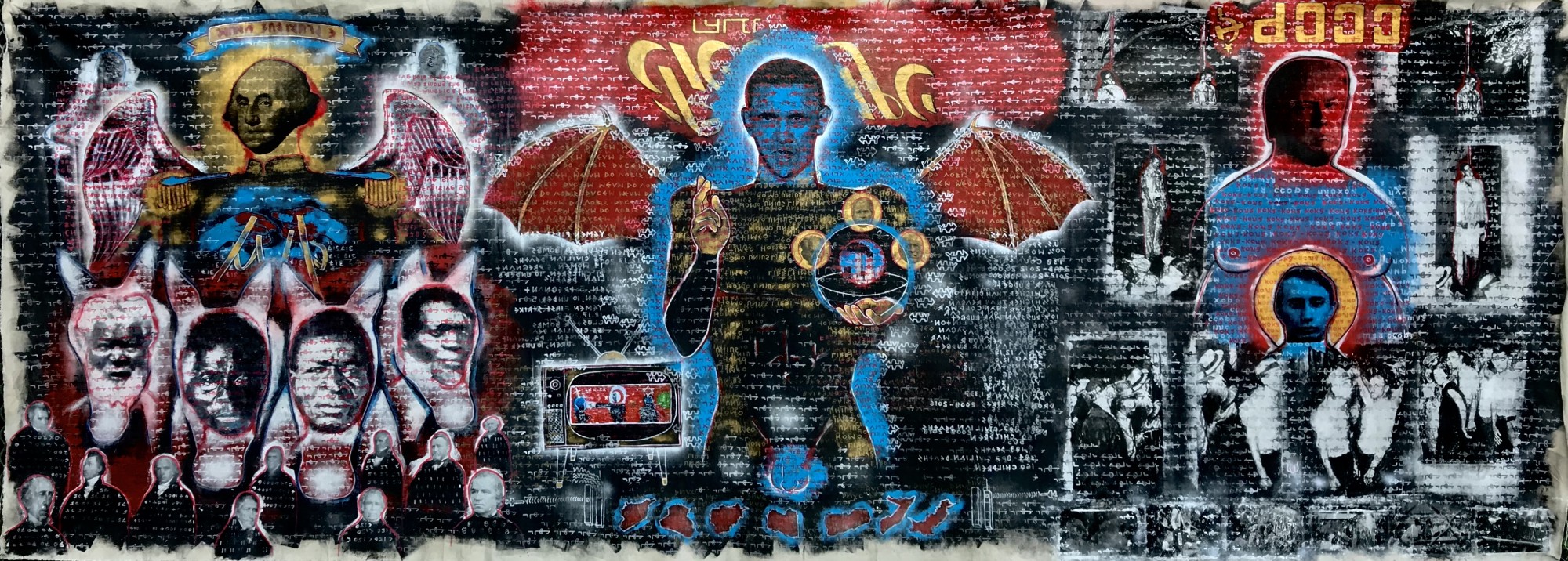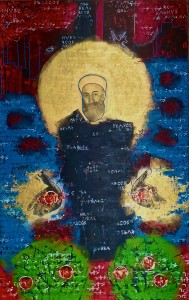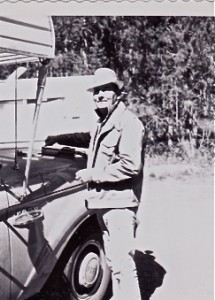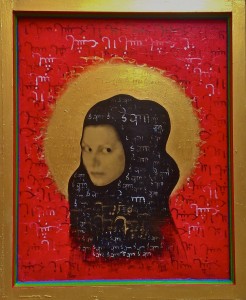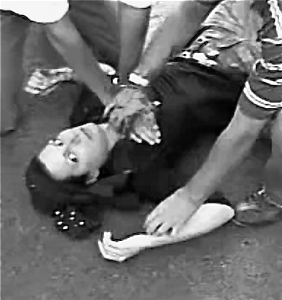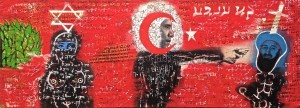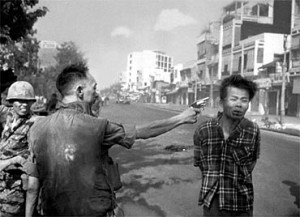Mixed media on wood
74.93cm X 118.11cm (29.5” X 46.5”)
Genghis Khan was the George Washington of Mongolia. Alexander the Great was Attila the Hun to Persians. Columbus is Hitler to Dominicans. And Truman, the Anti-Christ to the denizens of Hiroshima and Nagasaki.
After Osama bin Laden was killed I read an apocryphal piece of journalism on his life in the Pakistani compound. It claimed he had been an avid gardener and wore a sombrero outdoors to hide from the peering eyes of drones and spy planes. The piece also claimed he had tomato-growing contests with his grandkids. When I Googled it later I got nothing but pot plants and opium.
As a small child my grandfather’s past was incidental to me or at the least, unknown. I knew he’d been a boxer in the army in Hawaii. The tattoos on his arms illustrated he’d lived a life different from my parents. What if I discovered he had committed atrocities in a foreign lands?
Later, when I discovered two interviews published by Al Jazeera and the Pakistani newspaper Ummat Karachi where bin Laden denied involvement in the planning and execution of 9/11, as well as the findings of BYU physicist Steven E. Jones and nine other authors published in the peer-reviewed Open Chemical Physics Journal on the presence of nano-thermitic materials in 911 dust, I began to see bin Laden as a fall guy.
My grandfather had also been maligned -for his lack of religiosity, his drinking, his smoking and even the accusations of infidelity in his youth.
For me, he was only grandpa, a god who grew tomatoes in summer.
